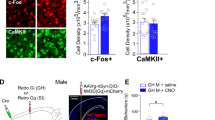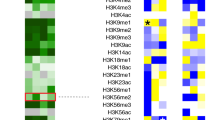Abstract
Why do some individuals succumb to stress and develop debilitating psychiatric disorders, whereas others adapt well in the face of adversity? There is a gap in understanding the neural bases of individual differences in the responses to environmental factors on brain development and functions. Here, using a novel approach for screening an inbred population of laboratory animals, we identified two subpopulations of mice: susceptible mice that show mood-related abnormalities compared with resilient mice, which cope better with stress. This approach combined with molecular and behavioral analyses, led us to recognize, in hippocampus, presynaptic mGlu2 receptors, which inhibit glutamate release, as a stress-sensitive marker of individual differences to stress-induced mood disorders. Indeed, genetic mGlu2 deletion in mice results in a more severe susceptibility to stress, mimicking the susceptible mouse sub-population. Furthermore, we describe an underlying mechanism by which glucocorticoids, acting via mineralocorticoid receptors (MRs), decrease resilience to stress via downregulation of mGlu2 receptors. We also provide a mechanistic link between MRs and an epigenetic control of the glutamatergic synapse that underlies susceptibility to stressful experiences. The approach and the epigenetic allostasis concept introduced here serve as a model for identifying individual differences based upon biomarkers and underlying mechanisms and also provide molecular features that may be useful in translation to human behavior and psychopathology.
This is a preview of subscription content, access via your institution
Access options
Subscribe to this journal
Receive 12 print issues and online access
$259.00 per year
only $21.58 per issue
Buy this article
- Purchase on Springer Link
- Instant access to full article PDF
Prices may be subject to local taxes which are calculated during checkout





Similar content being viewed by others
References
Fraga MF, Ballestar E, Paz MF, Ropero S, Setien S, Ballestar ML et al. Epigenetic differences arise during the lifetime of monozygotic twins. Proc Natl Acad Sci USA 2005; 102: 10604–10609.
Freund J, Brandmaier AM, Lewejohann L, Kirste I, Kritzlerm M, Kruger A . Emergence of individuality in genetically identical mice. Science 2013; 340: 756–759.
Cavigelli SA, McClintock MK . Fear of novelty in infant rats predicts adult corticosterone dynamics and an early death. Proc Natl Acad Sci USA 2003; 100: 16131–16136.
Miller MM, Morrison JH, McEwen BS . Basal anxiety-like behavior predicts differences in dendritic morphology in the medial prefrontal cortex in two strains of rats. Behav Brain Res 2012; 229: 280–288.
Southwick SM, Charney DS . The science of resilience: implications for the prevention and treatment of depression. Science 2012; 338: 79–82.
Wood SK, Walker HE, Valentino RJ, Bhatnagar S . Individual differences in reactivity to social stress predict susceptibility and resilience to a depressive phenotype: role of corticotropin-releasing factor. Endocrinology 2010; 151: 1795–1805.
McEwen BS . Brain on stress: how the social environment gets under the skin. Proc Natl Acad Sci USA 2012; 109: 17180–17185.
Machado-Vieira R, Soeiro-De-Souza MG, Richards EM, Teixeira AL, Zarate CA Jr . Multiple levels of impaired neural plasticity and cellular resilience in bipolar disorder: developing treatments using an integrated translational approach. World J Biol Psychiatry 2013; 15: 84–95.
Zovkic IB, Meadows JP, Kaas GA, Sweatt JD . Interindividual variability in stress susceptibility: a role for epigenetic mechanisms in PTSD. Front Psychiatry 2013; 4: 60.
Charney DS . Psychobiological mechanisms of resilience and vulnerability: implications for successful adaptation to extreme stress. Am J Psychiatry 2004; 161: 195–216.
Yehuda R, Flory JD, Southwick S, Charney DS . Developing an agenda for translational studies of resilience and vulnerability following trauma exposure. Ann NY Acad Sci 2006; 1071: 379–396.
Feder A, Nestler EJ, Charney DS . Psychobiology and molecular genetics of resilience. Nat Rev Neurosci 2009; 10: 446–457.
Kinnally EL, Mann JJ . Early life stress programming and suicide risk. Psychiatr Ann 2012; 42: 95–100.
Oquendo MA, Brent DA, Birmaher B, Greenhill L, Kolko D, Stanley B et al. Posttraumatic stress disorder comorbid with major depression: factors mediating the association with suicidal behavior. Am J Psychiatry 2005; 162: 560–566.
Popoli M, Yan Z, McEwen BS, Sanacora G . The stressed synapse: the impact of stress and glucocorticoids on glutamate transmission. Nat Rev Neurosci 2011; 13: 22–37.
Nasca C, Xenos D, Barone Y, Caruso A, Scaccianoce S, Matrisciano F et al. L- acetylcarnitine causes rapid antidepressant effects through the epigenetic induction of mGlu2 receptors. Proc Natl Acad Sci USA 2013; 110: 4804–4809.
Kim JS, Schmid-Burgk W, Claus D, Kornhuber HH . Increased serum glutamate in depressed patients. Arch Psychiatr Nervenkr 1982; 232: 299–304.
Mitani H . Correlation between plasma levels of glutamate, alanine and serine with severity of depression. Prog Neuropsychopharmacol Biol Psychiatry 2006; 30: 1155–1158.
Venero C, Borrell J . Rapid glucocorticoid effects on excitatory amino acid levels in the hippocampus: a microdialysis study in freely moving rats. Eur J Neurosci 2007; 11: 2465–2473.
Overstreet DH . The Flinders sensitive line rats: a genetic animal model of depression. Neurosci Biobehav Rev 1993; 17: 51–68.
Flight MH . Antidepressant epigenetic action. Nat Rev Neurosci 2013; 14: 226.
Russo SJ, Charney DS . Next generation antidepressants. Proc Natl Acad Sci USA 2013; 110: 4441–4442.
McEwen BS . Stress and hippocampal plasticity. Annu Rev Neurosci 1999; 22: 105–122.
Yuen EY, Wei J, Liu W, Zhong P, Li X, Yan Z . Repeated stress causes cognitive impairment by suppressing glutamate receptor expression and function in prefrontal cortex. Neuron 2012; 73: 962–977.
Liston C, Gan WB . Glucocorticoids are critical regulators of dendritic spine development and plasticity in vivo. Proc Natl Acad Sci USA 2011; 38: 16074–16079.
Nasca C, Orlando R, Marchiafava M, Boldrini P, Battaglia G, Scaccianoce S et al. Exposure to predator odor and resulting anxiety enhances the expression of the α2 δ subunit of voltage-sensitive calcium channels in the amygdala. J Neurochem 2013; 125: 649–656.
Nestler EJ, Hyman SE . Animal models of neuropsychiatric disorders. Nat Neurosci 2010; 13: 1161–1169.
McEwen BS . Glucocorticoids, depression, and mood disorders: structural remodeling in the brain. Metabolism 2005; 54: 20–23.
Myers B, McKlveen JM, Herman JP . Glucocorticoid actions on synapses, circuits, and behavior: Implications for the energetics of stress. Front Neuroendocrinol 2014; 35: 180–196.
Groeneweg FL, Karst H, de Kloet ER, Joëls M . Rapid non-genomic effects of corticosteroids and their role in the central stress response. J Endocrinol 2011; 2: 153–167.
Karst H, Berger S, Turiault M, Tronche F, Schütz G, Joëls M . Mineralocorticoid receptors are indispensable for nongenomic modulation of hippocampal glutamate transmission by corticosterone. Proc Natl Acad Sci USA 2005; 102: 19204–19207.
McEwen BS, Morrison JH . The brain on stress: vulnerability and plasticity of the prefrontal cortex over the life course. Neuron 2013; 79: 16–29.
Russo SJ, Murrough JW, Han MH, Charney DS, Nestler EJ . Neurobiology of resilience. Nat Neurosci 2012; 15: 1475–1484.
Herman JP, Cullinan WE . Neurocircuitry of stress: central control of the hypothalamo- pituitary-adrenocortical axis. Trends Neurosci 1997; 20: 78–84.
Krishnan V, Han MH, Graham DL, Berton O, Renthal W, Russo SJ et al. Molecular adaptations underlying susceptibility and resistance to social defeat in brain reward regions. Cell 2007; 131: 391–404.
Gunduz-Cinar O, Hill MN, McEwen BS, Holmes A . Amygdala FAAH and anandamide: mediating protection and recovery from stress. Trends Pharmacol Sci 2013; 34: 637–644.
Brydges NM, Jin R, Seckl J, Holmes MC, Drake AJ, Hall J .. Juvenile stress enhances anxiety and alters corticosteroid receptor expression in adulthood. Brain Behav 2014; 1: 4–13.
Tang AC, Reeb-Sutherland BC, Romeo RD, McEwen BS . On the causes of early life experience effects: evaluating the role of mom. Front Neuroendocrinol 2014; 35: 245–251.
Meaney MJ, Szyf M . Environmental programming of stress responses through DNA methylation: life at the interface between a dynamic environment and a fixed genome. Dialogues Clin Neurosci 2005; 7: 103–123.
Parker KJ, Buckmaster CL, Schatzberg AF, Lyons DM . Prospective investigation of stress innoculation in young monkeys. Arch Gen Psychiat 2004; 61: 933–941.
McEwen BS . Protective and damaging effects of stress mediators. N Engl J Med 1998; 338: 171–179.
Haller J, Mikics E, Makara GB . The effects of non-genomic glucocorticoid mechanisms on bodily functions and the central neural system. A critical evaluation of findings. Front Neuroendocrinol 2007; 29: 273–291.
Swanson CJ, Bures M, Johnson MP, Linden AM, Monn JA, Schoepp DD . Metabotropic glutamate receptors as novel targets for anxiety and stress disorders. Nat Rev Drug Discov 2005; 4: 131–144.
Timmermans W, Xiong H, Hoogenraad CC, Krugers HJ . Stress and excitatory synapses: from health to disease. Neuroscience 2013; 248: 626–636.
Acknowledgements
This work was supported by AFSP, HDRF and NIH Grant RO1 MH41256. We thank the ACNP (American Congress of Neuropsychopharmacology) and ECNP (European Congress of Neuropsychopharmacology) for awarding the preliminary results of this research. mGlu2 receptor-knockout mice (mGlu2−/− mice) were kindly provided by S. Nakanishi, University of Kyoto, Kyoto, Japan.
Author information
Authors and Affiliations
Corresponding authors
Ethics declarations
Competing interests
The authors declare no conflict of interest.
Additional information
Supplementary Information accompanies the paper on the Molecular Psychiatry website
Rights and permissions
About this article
Cite this article
Nasca, C., Bigio, B., Zelli, D. et al. Mind the gap: glucocorticoids modulate hippocampal glutamate tone underlying individual differences in stress susceptibility. Mol Psychiatry 20, 755–763 (2015). https://doi.org/10.1038/mp.2014.96
Received:
Revised:
Accepted:
Published:
Issue Date:
DOI: https://doi.org/10.1038/mp.2014.96
This article is cited by
-
The neuropsychopharmacology of acetyl-L-carnitine (LAC): basic, translational and therapeutic implications
Discover Mental Health (2024)
-
Changes at glutamate tripartite synapses in the prefrontal cortex of a new animal model of resilience/vulnerability to acute stress
Translational Psychiatry (2023)
-
Targeting PDK2 rescues stress-induced impaired brain energy metabolism
Molecular Psychiatry (2023)
-
mGlu2/3 receptor antagonists for depression: overview of underlying mechanisms and clinical development
European Archives of Psychiatry and Clinical Neuroscience (2023)
-
The stressed synapse 2.0: pathophysiological mechanisms in stress-related neuropsychiatric disorders
Nature Reviews Neuroscience (2022)



